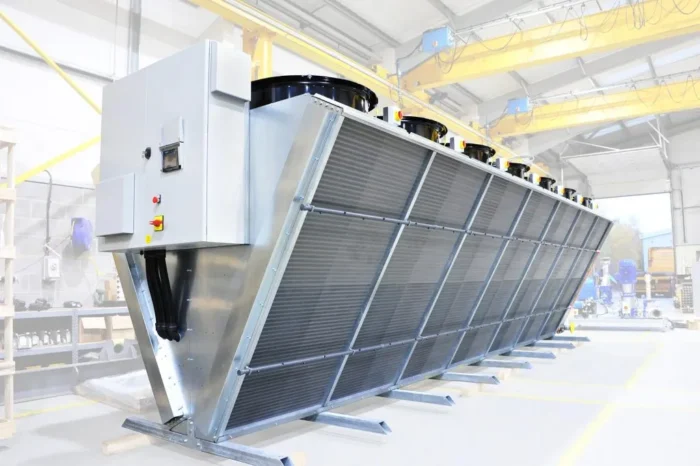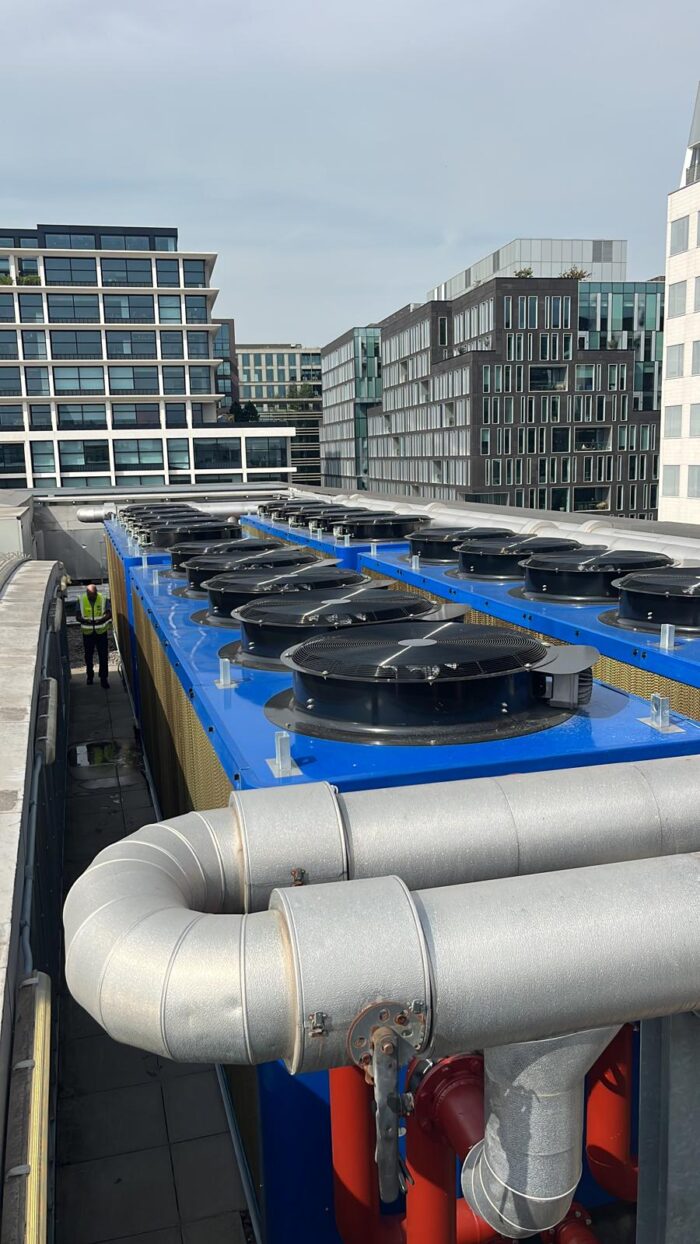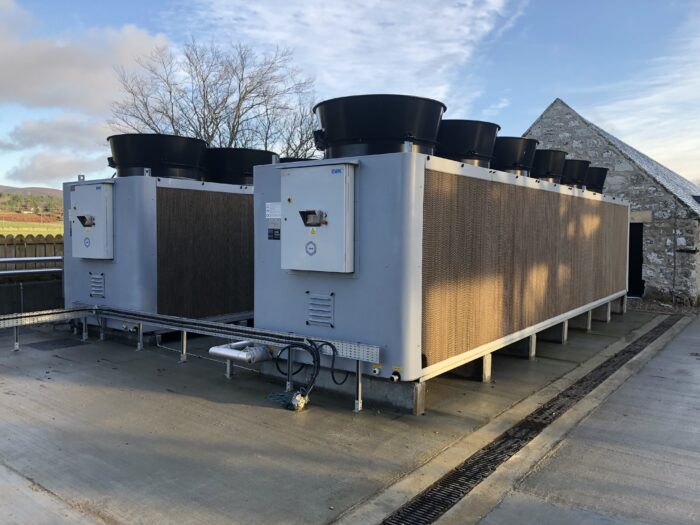Condenser, Dry Air and Adiabatic Coolers consume energy while providing heat-rejection for the cooling systems in data centres, cold stores, hotels, office buildings, industrial processes etc.
While at the design stage responsible stakeholders invest in and install the most efficient equipment available. More often than not, once installed the maintenance of this equipment is overlooked.
The coils in these units are constantly exposed to environmental contaminants like dust, pollen, and airborne chemicals.
A poor understanding of the process of heat transfer and how equipment is affected by environmental pollutants results in increased energy consumption over time, along with a permanent reduction in the heat transfer capacity of the surface area.
Neglecting regular cleaning can lead to significant performance degradation and premature system failure. Costing YOU, the client, more money in the long term!



Beyond the Visible Dirt:
It’s a common misconception that cleaning is only necessary when coils are visibly dirty. In reality, once the dirt is apparent, the damage is often already underway. One critical, often invisible threat is galvanic corrosion. Many coils utilise a combination of copper tubing and aluminium fins. When exposed to moisture and electrolytes (from environmental pollutants or even cleaning residue), a galvanic cell forms. Due to the difference in electrochemical potential between copper and aluminium, the aluminium corrodes sacrificially, even without visible signs. This corrosion weakens the fins, reduces heat transfer efficiency, and ultimately leads to coil failure.
The Perils of Harsh Cleaning:
While cleaning is essential, the method employed is equally important. Using strong acidic or alkaline cleaners, while seemingly effective in removing stubborn dirt, can leave behind residues that accelerate corrosion over time. Thorough rinsing is critical to remove all traces of cleaning chemicals. However, even with rinsing, microscopic residues can remain and initiate corrosion.
Furthermore, mechanical cleaning methods like high-pressure washing can be counterproductive. While they may remove surface dirt, they often force contaminants deeper into the coil, embedding them between the fins and making them even harder to remove. This can also damage the delicate fins, further reducing efficiency.
The Optimal Approach:
The most effective strategy is preventative maintenance with regular, gentle cleaning. Ideally, coils should be cleaned before any visible signs of dirt buildup appear.
- Mild Detergents: Use a neutral pH detergent specifically designed for coil cleaning. Most detergents labelled as “Coil Cleaners” are either highly alkaline or acidic and can cause damage over time.
- Hot Water Wash: Employ hot water to dissolve and flush away contaminants effectively.
- Thorough Rinsing: Ensure all cleaning solution is completely rinsed away to prevent residual corrosion.
- Regular Schedule: Establish a consistent cleaning schedule based on environmental conditions and system usage.
Our Approach:
At Vistech, we utilise our expertise in the field of heat transfer, providing a specialist cleaning service designed to maximise the life of your heat transfer equipment while ensuring maximum efficiency.
Get in touch with Vistech today for a specialist coil cleaning quotation and keep your cooling systems running efficiently year-round.
